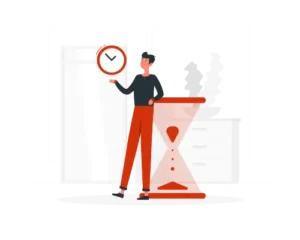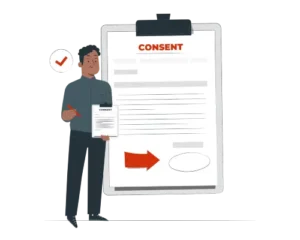Industries across the spectrum spend significant amounts of time on manual, labor-intensive accounts payable processes. According to a research report, it takes anywhere between 4 and 16 days to process an invoice from receipt to payment. Incidentally, up to 76% of this process requires manual effort from the Accounts Payable Team.
In spite of organizations investing significant time and money in new technology accounts payable teams struggle with many issues that lead to high costs and low efficiency.
By implementing RPA, organizations can derive strategic value from their Accounts Payable teams, significantly reduce transaction costs and reduce errors substantially.
Conventional approach to process engineering
Many companies have spent a significant effort in process re-engineering by leveraging technologies such as ERP, OCR, and EDI document management and e-invoices. Yet, there are significant challenges with the cost and administrative overheads of accounts payable.
Here are some challenges in making accounts payable efficient and error-free
1. Non-standard invoicing
In most organisations, invoices are submitted over email as PDF attachments or couriered as hard copies. There is inconsistency in the format of these invoices and manual handling becomes tedious. The PO has to match the ERPand the AP staff must resolve a number of issues to standardize these invoices.
2. Lack of structured information
Manually transferring the data from multiple invoice formats into the company’s approved or standardized format is a slow and repetitive process, often error-prone. As the volume of these invoices grows, the process becomes more complex and time-consuming.
3. Inconsistencies and approvals
These manual tasks often involve solving discrepancies and errors. Suppliers often send duplicate invoices adding to redundancies. Businesses with multiple locations have the risk of invoices being paid by multiple locations. Duplicate payments can negatively impact cash flow.
4. Maintaining records
As the organization scales up its activities, maintaining the paper records can add to a company’s labor costs remarkably. Storing, retrieving, and updating records is a tedious and time-intensive activity.
In a nutshell, the conventional and manual accounts payable processes don’t scale well and are cumbersome to carry out with reliable speed and accuracy.
Leveraging RPA in Accounts Payable
Organizations are fast adopting Accounts Payable Automation to help their workforce transition to higher cognitive work from tedious, repetitive, and time-consuming tasks. This transition in capabilities allows AP teams to focus on high-value tasks, adding additional capabilities, and improving employee and customer satisfaction.
Industry offering in Accounts Payable Automation
The standard industry practice for accounts payable teams is to identify the AP tasks that involve significant manual labour. The company can then automate these workflows with the help of software robots and other features like computer vision and OCR (Optical Character Recognition). These technologies read the vast amounts of unstructured data and transform them into structured invoices for further processing. Thus, the first step is to structure and digitize the data. Next, the finance and accounting team can streamline the workflow of structured data between the employees, the suppliers and third parties where applicable. Automation leads to better reporting and analytics to assist stakeholders make informed decisions faster by bringing more agility and accuracy to the entire AP workflow.
RPAtech solution and its capabilities in Accounts Payable Automation
Our automated solution for AP is designed for the finance and accounting ecosystem to streamline invoice processing. RPATech works with multiple input formats and extracts data using global data extraction tools.
RPA use case: Accounts Payable Automation
RPATech’s solution designs workflows to accommodate changes according to the customer’s requirements and can be integrated with some of the leading ERP software including SAP, Microsoft Dynamics, Oracle, etc.
The entire AP workflow is automated using leading automation platforms such as UiPath, Automation Anywhere, or Microsoft and comprises all aspects of invoice processing such as master’s management, tax validations, two/three-way matching, non-PO invoice coding and processing in ERPs, all the while keeping humans in the loop for approval/declining.
RPATech customizes the automation solution for each industry’s unique needs to automate the invoice process smoothly. Typically, a bot logs into the required systems. Then read and register the invoices in the ERP. The bot then performs testing and validation, including reconciliation against other software.
The bot can post, park, or block invoices on the basis of business logic and approval processes that the client follows.
Benefits of automating accounts payable with RPATech
Accuracy
Using RPA services to automate accounts payable reduces the error rates to 0% and enhances the brand’s relations with clients and partners.
Minimizing manual intervention
Integrating RPA solutions with invoice processing streamlines the entire workflow and reduces the need for manual validation to 90%, freeing up team members for more critical and high-value tasks.
Improved Turn-Around-Time
The accounts payable turnaround time can be reduced significantly from minutest to seconds with a 90% reduction in TAT.
Approval and exception resolution
The approval mechanism is automated by rules-based and auto-approved criteria that minimize human errors and interaction. Organizations can trigger exceptions for data that does not validate the automated criteria for routing, matching, and circulation.
Regulatory compliance and governance
RPATech’s accounts payable solution embeds compliance and governance criteria such as access and roles. You can set up your process to manage tax and other statutory compliances automatically.
Faster ROI
Accounts Payable automation offers considerable cost-efficiency that enhance the business bottom line and lead to faster and significant ROI. According to reports, a small company spends US$15 on average per invoice, and the expenses for a similar invoice in larger corporations can go as high as US$40. Using invoice automation, the costs can be reduced to US$1 per invoice.
Conclusion
Implementation of RPA enables enterprises to optimize their accounts payable transaction costs. By minimizing human intervention in invoice processing, automating approvals and exceptions, companies can reduce the turnaround times drastically. Highly repetitive and laborious accounts processes such as invoice processing make the ideal use cases for robotic process automation. Not only do organizations benefit from going paperless, but they make significant gains in terms of invoice processing speed, accuracy and costs.




